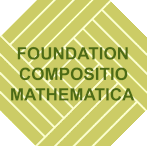Scientific Committee
Comité scientifique
Alice Guionnet (CNRS, ENS Lyon).
Anton Zorich (Université Paris Cité)
Organizing Committee
Comité d’organisation
Nalini Anantharaman (Université de Strasbourg & Collège de France)
Charles Bordenave (CNRS, Aix-Marseille Université)
Bram Petri (Sorbonne Université)
Models of random hyperbolic surfaces of various flavours have been introduced of the past two decades: a combinatorial one by Brooks–Makover, a continuous one by Mirzkhani and Guth–Parlier–Young and a more algebraically flavoured one by Magee–Naud–Puder. These random surfaces have seen spectacular success, especially in the last decade.
Like the analogous theory of random graphs, random surfaces can both be used to study the “typical” behavior of hyperbolic surfaces and to solve extremal problems. The latter is often called the probabilistic method, the idea is that sometimes it is easier to prove that the probability that a certain random object has extremal properties than to explicitly construct objects with such properties.
A well known example of an open extremal problem in hyperbolic geometry is Selberg’s 1/4 conjecture, which asks whether certain arithmetic hyperbolic surfaces have a spectral gap of more than 1/4. The significance of 1/4 here is that it is the spectral gap of the hyperbolic plane and classical results due to Huber and Cheng imply that because of that, 1/4 is essentially the largest spectral gap one can hope for. However, even the existence of a sequence of hyperbolic surfaces whose genus tends to infinity and whose spectral gap is consistently above 1/4 is currently not known. Random constructions are a natural place to look for examples and in recent years there has been a surge of work on the spectral gaps of random surfaces. An example of a recent breakthrough, due to Hide–Magee, uses a random construction to provide the first sequence of surfaces whose genus tends to infinity and whose spectral gap tends to 1/4.
In parallel, the spectral gap of random graphs has also been intensively studied over the last forty years. The results and techniques from this area have not only been a source of inspiration but have also already been used to prove results on random hyperbolic surfaces. More generally, there has been in the past years a convergence of interests between mathematicians working on the following subjects :
- geometry and spectrum of random objects (in particular graphs and surfaces) : spectral gap, diameter, Cheeger constant,…;
- random matrix theory, random Schrödinger operators, and their spectral statistics;
- free probability theory;
- representations of surface groups : explicit and asymptotic formulas;
- Teichmüller theory in the high genus limit;
- planar maps and quantum gravity;
- combinatorial and algorithmic aspects of the previous questions. It’s high time for a meeting that brings together researchers from these domains.
SPEAKERS
Johannes Alt (Universität Bonn) Erdős-Rényi graph as model of disordered quantum systems
Thomas Budzinski (ENS de Lyon) Random triangulations in high genus
Guillaume Cebron (Université Toulouse III – Paul Sabatier) Graphon-Theoretic Approach to Central Limit Theorems for graph independence
Antoine Dahlqvist (University of Sussex ) Large N limit of Wilson loops on closed surfaces
Vincent Delecroix (Université de Bordeaux) TBA
Joel Friedman (University of British Columbia) Mobius functions and trace methods
Nihar Gargava (Université de Strasbourg) TBA
Alice Guionnet (ENS de Lyon) Matrix models, topological expansion and the enumeration of maps: old and new
Ella Hiesmayr (University of California, Berkeley) TBA
Jiaoyang Huang (University of Pennsylvania) Extremal Eigenvalues of Random Regular Graphs
Adrien Kassel (CNRS, ENS de Lyon) Random spanning forests and a glance at the large scale geometry of surfaces
Cyril Letrouit (Université Paris-Saclay) Maximal multiplicity of Laplacian eigenvalues in negatively curved manifolds
Mingkun Liu (University of Luxembourg) Length spectra of random metric maps of large genus: a Teichmüller theory approach
Michael Magee (Durham University) TBA
Joffrey Mathien (Aix-Marseille Université) TBA
Laura Monk (University of Bristol) Typical hyperbolic surfaces have an optimal spectral gap
Doron Puder (Tel Aviv University) TBA
Eugenia Sapir (Binghamton University) Short curves on expander surfaces
Joe Thomas (Durham University) Spectrum and geometry of random many cusped hyperbolic surfaces
SPONSORS







